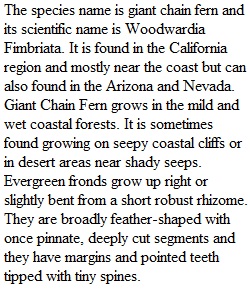


Q As humans continue to modify natural habitats, we are increasingly planting nonnative species for landscaping. Read the article on bird decline and nonnative species. Summarize the article in a different assignment (see module). Planting native species in our yards has many ecological benefits. First, less water, fertilizer, soil amendments, etc. are needed with plants adapted to conditions in our plant community (valley grassland in Fresno). In addition, native plants provide needed resources for native wildlife (insects, birds, and some mammals). Visit the Calscape Links to an external site.website to find a native plant for your area. Enter your address or zip code. If you are in Fresno, you are most likely Valley Grassland. Choose one plant or tree that you find interesting. Tell us about the plant/tree you found. Use both the Calscape website and the Cal Flora website Links to an external site.to gather information. You will also answer questions about CalFlora in a separate assignment (see module). You may also find many of these plants locally at Intermountain Nursery in Prather Links to an external site.. You should include in your post: a photo of the plant/tree, scientific name, natural range, habitat type, plant communities in which it is found, growth form (herb, tree, shrub, etc.), life cycle information (annual, perennial), notable features, wildlife value, and anything else you find interesting. PLEASE DO NOT CUT AND PASTE text from either website. You may "copy" photos from CalFlora or Calscape. Then respond to two other classmates with a question about their plant/tree. Please do your best to answer any questions you receive.
View Related Questions